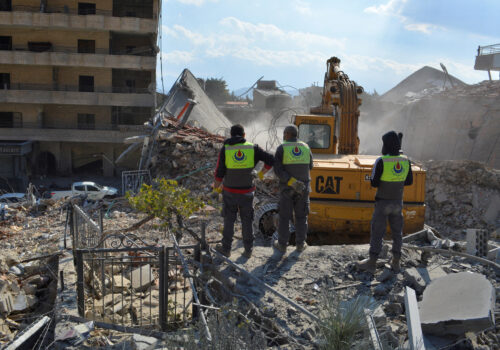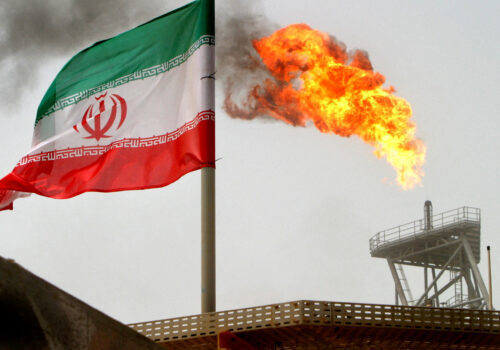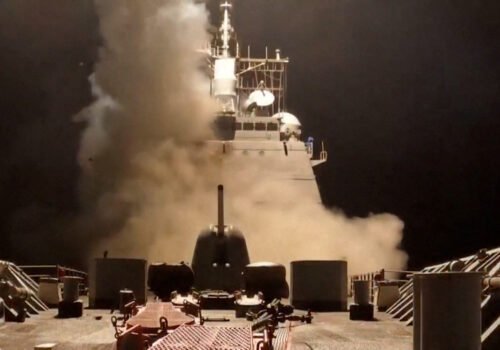After proxies and nuclear program threats, Iran may turn to terror abroad
Iran has strategically wielded its nuclear program as a dual-purpose tool: a bargaining chip in international negotiations and a deterrent against adversaries like Israel and the United States. But as threats mount of a possible Israeli strike on Tehran’s nuclear facilities, paired with a weakening of its numerous proxies since the Gaza war, the Islamic Republic could turn towards transnational terrorism absent a more coordinated approach from Washington and its allies.
The 2015 Joint Comprehensive Plan of Action (JCPOA) aimed to limit Iran’s nuclear activities in exchange for sanctions relief, but the US withdrawal in 2018 during President Donald Trump’s first term prompted Tehran to resume uranium enrichment, leveraging it to pressure the West for economic concessions.
By September 2024, reports indicated Iran had amassed enough enriched uranium for multiple nuclear devices if further processed, amplifying its strategic leverage and creating uncertainty for potential aggressors. Alongside its nuclear pursuits, Iran employs proxy forces such as Hezbollah in Lebanon, Shiite militias in Iraq, and the Houthis in Yemen to project power indirectly. These groups conduct attacks with plausible deniability, enhancing Iran’s regional deterrence while shielding it from direct retaliation. Hezbollah’s clashes with Israel and Houthi disruptions in the Red Sea exemplify this approach, reinforcing Iran’s influence without risking open conflict.
Israel has recently intensified its military efforts to counter these threats, targeting Iran’s proxies and defenses with significant impact. Israel’s war in Gaza, sparked by Hamas-led attacks in October 2023, has inflicted heavy losses on the militant group, with estimates of over 17,000 fighters killed by August 2024, though the group remains active and engaged in ceasefire talks as of early 2025. Similarly, Israel’s intensifying campaign against Hezbollah in Lebanon has included strategic sabotage operations and precision strikes that killed key leaders like Hassan Nasrallah, severely degrading the group’s military capabilities and displacing millions across the Lebanon-Israel border.
SIGN UP FOR THIS WEEK IN THE MIDEAST NEWSLETTER
While these operations have weakened Hamas and Hezbollah, their complete elimination as deterrents is contested. Ongoing skirmishes suggest resilience despite setbacks. Israel has also struck Iran’s integrated air defense systems, targeting S-300 missile batteries and radar installations around critical energy sites. These strikes have increased Iran’s vulnerability to future Israeli airstrikes. That said, enduring uncertainties over Tehran’s capacity to repair or adapt its defenses complicate the regional power balance.
Trump has reiterated his firm stance against Iran acquiring nuclear weapons, echoing his 2020 declaration that “as long as I am president, Iran will never be allowed to have a nuclear weapon.” While favoring a negotiated settlement, Trump has not ruled out military force, a position mirrored by Israeli Prime Minister Benjamin Netanyahu, who has long advocated a hardline approach to Iran’s nuclear ambitions. In response, Iran’s Supreme Leader, Ayatollah Ali Khamenei, has rejected negotiations under what he terms US “bullying,” stating that Tehran “will definitely not accept their expectations,” deepening the diplomatic impasse.
This standoff raises the risk of escalation, particularly if military action targets Iran’s nuclear facilities. Should such an attack occur, Iran might retaliate through transnational terrorism including the use of sleeper cells, targeting US assets in the region—such as the US Fifth fleet stationed in Bahrain—or Israeli and Jewish interests abroad, as it did with the 1994 Buenos Aires synagogue bombing orchestrated via Hezbollah. Such escalations would be in addition to the risk of potential attacks against US forces stationed in Iraq and Syria.
Iran’s history of supporting terrorist groups and its recent audacity—evidenced by assassination plots on US soil, including one against Trump during his re-election campaign—suggests a willingness to escalate if provoked. The November 2024 indictment of three individuals linked to Iran for plotting Trump’s assassination underscores this growing threat, with the US Federal Bureau of Investigation (FBI) noting Tehran’s increasing boldness.
The United States and its regional allies face a pressing need to counter these threats proactively, given Iran’s demonstrated capacity for transnational attacks and its network of sleeper cells. Enhanced counterintelligence efforts are critical to identify and neutralize plots before they materialize, particularly in vulnerable locations like Bahrain, home to the US Fifth Fleet. Intelligence sharing with allies, bolstered by surveillance of suspected operatives, could thwart attacks similar to those Iran has executed or attempted in the past. The recent foiling of assassination plots by the FBI highlights the effectiveness of such measures, but Iran’s persistence—coupled with its weakened regional position after Israel’s strikes—demands sustained vigilance.
Alex Plitsas is a nonresident senior fellow with the Middle East Programs’ Scowcroft Middle East Security Initiative and leads the Initiative’s Counterterrorism Project, which is designed to examine the future of global terrorism threats and counterterrorism efforts.
Further reading
Tue, Mar 25, 2025
Dispatch from Bekaa: Inside the sectarian skirmishes on the Syria-Lebanon border
MENASource By Nicholas Blanford
Local Shia tribesmen have battled an assortment of Sunni jihadist militias and the new Syrian security forces dominated by Hayat Tahrir al-Sham (HTS).
Thu, Mar 13, 2025
Why now is the right time for ‘maximum pressure’ on Iran’s oil exports
MENASource By
Iran is more vulnerable than it has been in decades; the United States can deliver a decisive blow to Tehran and set the stage for a more stable and secure future.
Wed, Mar 19, 2025
Trump’s military cudgel in Yemen will not achieve US regional objectives
MENASource By
Donald Trump risks falling into US pattern of short-sighted military action at the expense of constructing a sustainable plan for Yemen.
Image: Iran's Supreme Leader Ayatollah Ali Khamenei (khamenei.ir)


